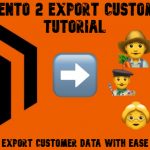Magento VS WooCommerce (WordPress based E-Commerce solution)
When it comes to choosing the right e-commerce platform there are a lot of nuances to think about. In this post we’ve compared Magento with WooCommerce. Both are open source, but they still have some major differences. As a result WooCommerce, which is a base for over 259,000 sites, overtakes all versions of Magento (over 213,000 sites) in popularity. Flawless connection with other platforms and systems is one of the main reasons that WooCommerce achieved a growth of 452% over the last year. But lets compare both platforms.

![]()
Meet WooCommerce Migration Add-On for Magento 2. This add-on will help you migrate from your WooCommerce store to Magento 2 in a simple and convenient way. The add-on features:
- Order, product, customer, and address migration
- File, url, FTP/SFTP, Dropbox migration sources
- A complete solution for WooCommerce to Magento 2 migration
- CSV and XML file format support
- Mapping of the attributes during migration
- Mapping of the product prices during migration
More information about can be found at the add-on product page.
Magento is an e-commerce shop management system, while WooCommerce is a WordPress plugin. As a result WooCommerce has standard hosting requirements, and even big e-commerce stores with thousands of items and heavy traffic don’t need powerful servers. In its turn Magento is almost always resource hungry, but it provides a wider functionality. Now, when you know one of the core differences between two platforms, we can talk about similarities.

At the same time, Magento and WooCommerce are:
1) open source, as we mentioned above
2) based on freemium business models,
3) opened to personalization and customization
4) allow you to have a blog
5) support infinite number of products.
WooCommerce is a perfect solution for small businesses. Being resource saving, it provides all the necessary functional performance. Another good point is that WooCommerce is easy to use not only for customers and vendors, but also for the developers. Add-ons in WooCommerce are often free and always cheaper compared with Magento. Impressive number of extensions and huge WordPress community are also among the advantages of WooCommerce.

In its turn, Magento was developed for e-commerce from the very beginning. You can choose one of free store types: Small, Medium, or Large. With higher maintenance costs, Magento is perfectly suitable for big businesses, but in practice, you can see a lot of small e-commerce stores, based on this platform.

Magento features
-
With Easy translation you can translate your front-end with no need for editing CSV files;
-
With Different store views feature you get one backend for different stores;
-
Magento has a large set of selling tools;
-
Layered navigation allows you to let the customer apply filters to products listings based on price range, brand, color and other criterias;
-
The market is full of both free and paid add-ons and themes.

WooCommerce features
-
WooCommerce is easy to setup;
-
With Affiliate products feature you’re able to sell affiliate products and increase your affiliate income;
-
There is a built-in ratings system in WooCommerce;
-
There is the aforementioned Layered navigation in WooCommerce, but it is not so full featured as in Magento;
-
Widgets, add-ons and themes.
Conclusion
WooCommerce is a perfect platform for small e-commerce businesses. It needs relatively low amount of resources to operate and provides all the necessary functions. Flawless connection with other platforms make WooCommerce very popular among vendors. Magento, on the other hand, has much wider selection of features, but requires more resources for the installation, maintenance and functioning.
|
|









